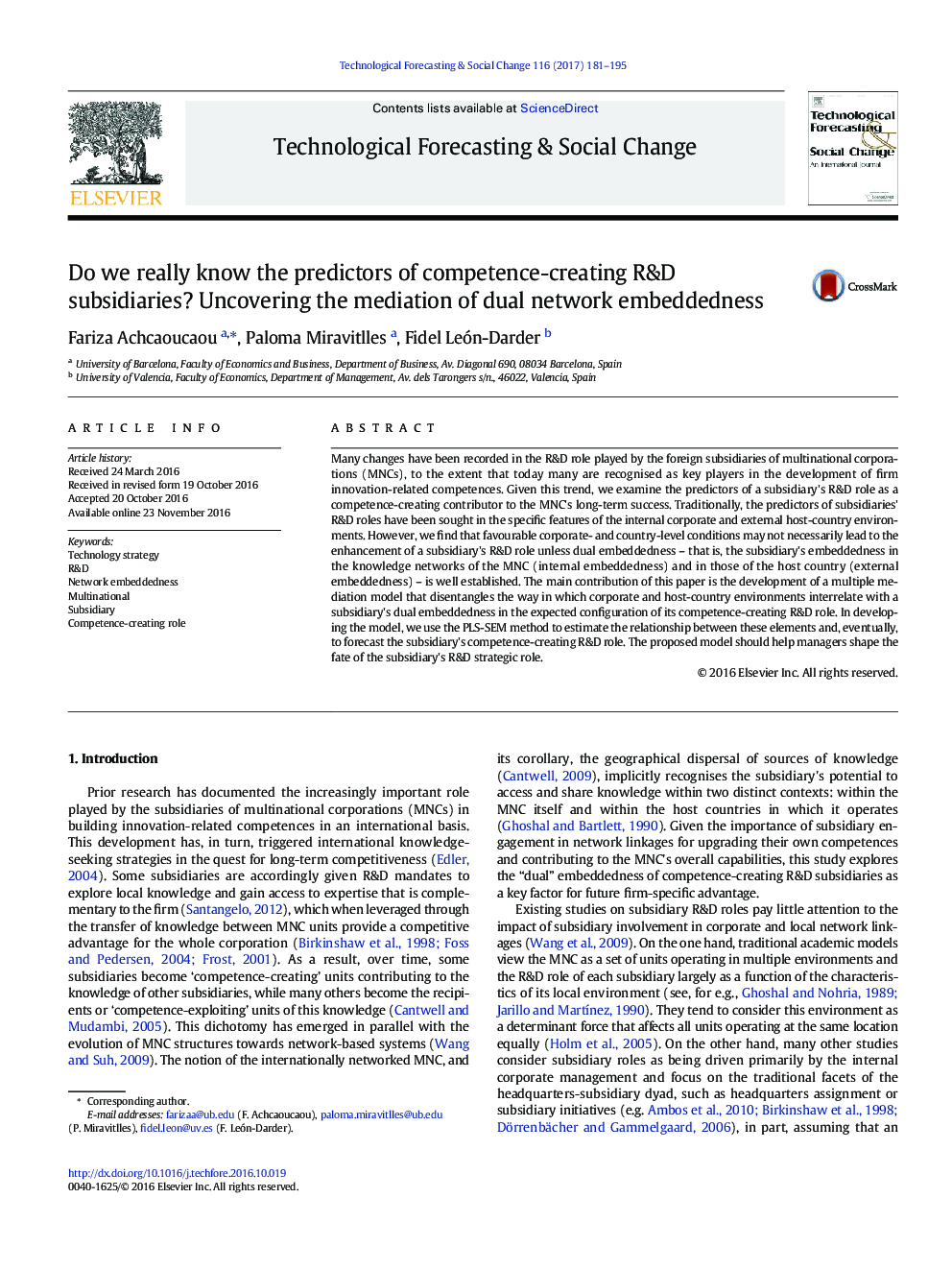| Article ID | Journal | Published Year | Pages | File Type |
|---|---|---|---|---|
| 5037008 | Technological Forecasting and Social Change | 2017 | 15 Pages |
â¢The model proposed uncovers the predictors of subsidiaries' R&D roles.â¢Dual network embeddedness emerges as the mediating predictor of R&D roles.â¢Corporate and country predictors fully impact R&D roles through dual embeddedness.â¢Internal embeddedness mediates as the “missing link” among the R&D role predictors.
Many changes have been recorded in the R&D role played by the foreign subsidiaries of multinational corporations (MNCs), to the extent that today many are recognised as key players in the development of firm innovation-related competences. Given this trend, we examine the predictors of a subsidiary's R&D role as a competence-creating contributor to the MNC's long-term success. Traditionally, the predictors of subsidiaries' R&D roles have been sought in the specific features of the internal corporate and external host-country environments. However, we find that favourable corporate- and country-level conditions may not necessarily lead to the enhancement of a subsidiary's R&D role unless dual embeddedness - that is, the subsidiary's embeddedness in the knowledge networks of the MNC (internal embeddedness) and in those of the host country (external embeddedness) - is well established. The main contribution of this paper is the development of a multiple mediation model that disentangles the way in which corporate and host-country environments interrelate with a subsidiary's dual embeddedness in the expected configuration of its competence-creating R&D role. In developing the model, we use the PLS-SEM method to estimate the relationship between these elements and, eventually, to forecast the subsidiary's competence-creating R&D role. The proposed model should help managers shape the fate of the subsidiary's R&D strategic role.
